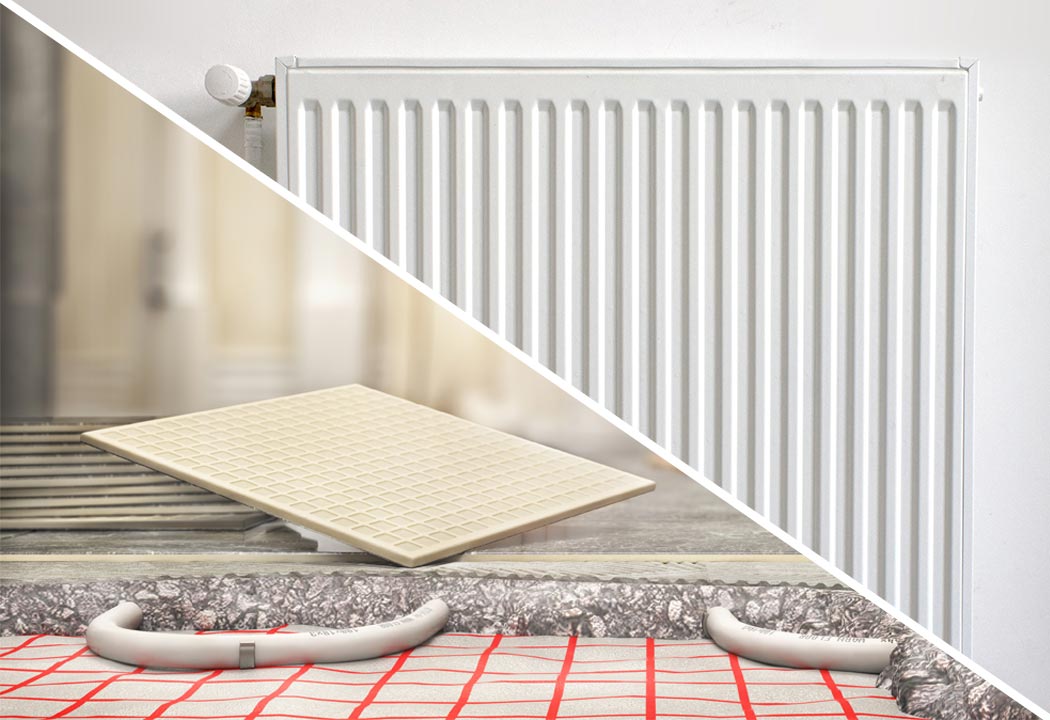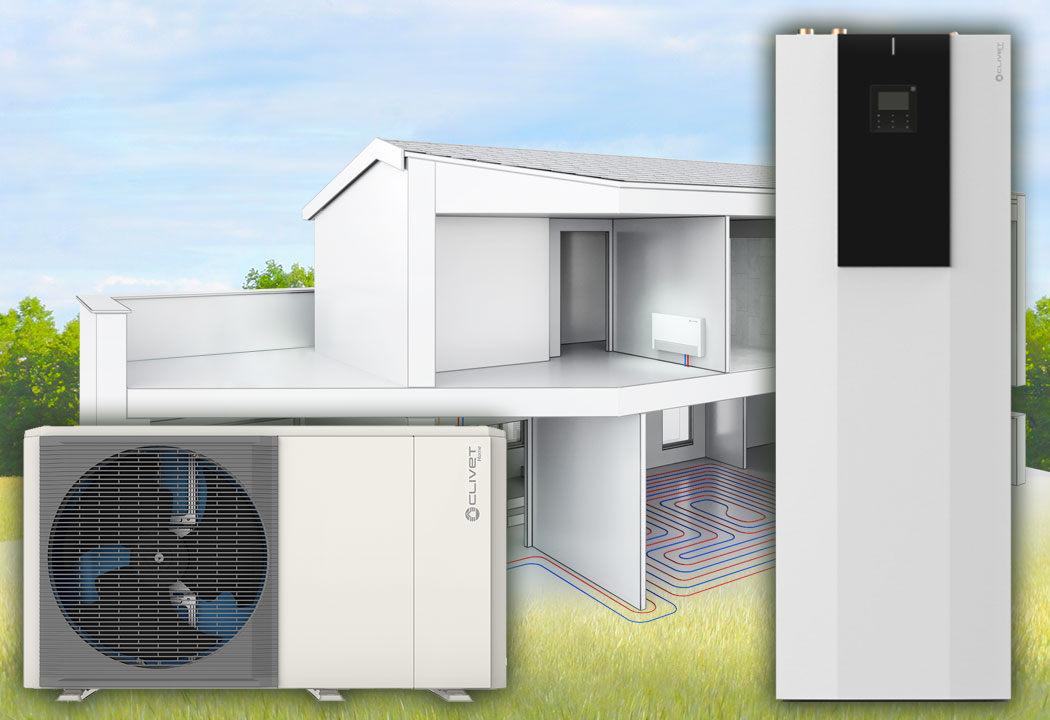Except for the air-to-air model, which heats and cools rooms by transferring thermal energy between outdoor air and the air inside the home, all other types of heat pumps are well suited to be combined with a radiant floor heating system.
Air-to-water heat pumps
The most widely used product is the air-to-water heat pump, which makes use of air heat, transferring energy to the water in the system. In this case, the advantage is that, besides being able to heat and cool rooms, it is also possible to produce domestic hot water. Its greatest strength is its versatility, of course, since it can be integrated with other kinds of systems such as a condensing boiler, thereby creating a hybrid system, and with solar thermal energy.
Water-to-water heat pumps
In the case of water-to-water heat pumps, instead, heat is drawn from reservoirs and aquifers, while in the case of geothermal systems, the energy source is the subsoil. When compared to their air-to-water counterparts, these two models ensure consistently high performance all year round. When choosing the most suitable heat pump for your home or business, you should, however, take a number of factors into consideration. First of all, you should consider the energy demand required to operate the radiant system and ensure optimal heating in the winter months, and possibly cooling in summer.
Heat pump and radiant system even for cooling?
As well as providing optimal thermal comfort in winter, floor heating systems can also be an interesting solution for cooling in summer. They basically work in a similar way: ‘chilled’ water at a temperature of 15-18 °C circulates through the system’s hydraulic circuits, which cools the floor. In this case, reversible heat pumps are required, which are able to draw heat from inside the home and then release it outside. The end result is perfect indoor comfort even in summer, meaning that you can do without a split air conditioner and significantly reduce consumption. The only thing to bear in mind is that a dehumidifier should also be used to make sure that the air humidity stays within a range of 50 to 60%.
Heating with heat pump and photovoltaic systems: is it convenient?
Heat pumps use renewable sources to generate the thermal energy required for the radiant floor heating system to heat rooms, but are nevertheless electronic devices that use electricity. Consequently, to increase system efficiency and save energy, combining it with a photovoltaic system can prove to be a very good idea. People who install photovoltaic panels on the roof of their home usually do this so that they can produce the electricity they need to use lights and household appliances free of charge, cutting their electricity bills and even getting them down to zero by installing a storage battery. But not everybody knows that combining photovoltaic panels with a heat pump also ensures additional substantial savings on heating and domestic hot water production.



